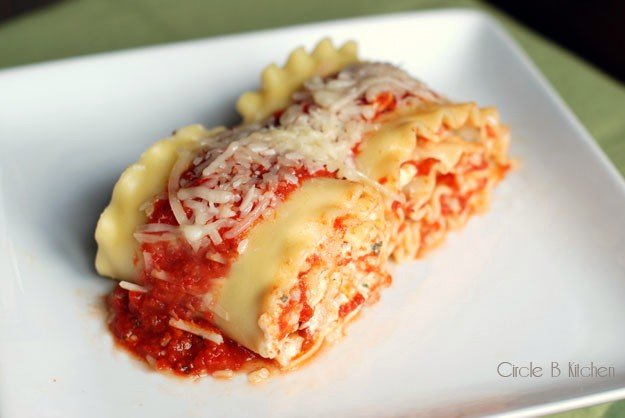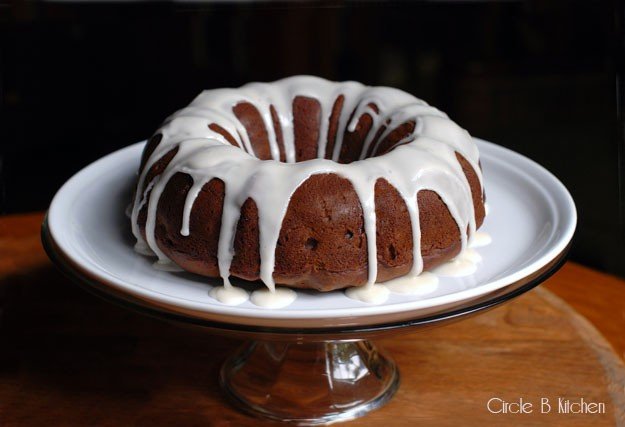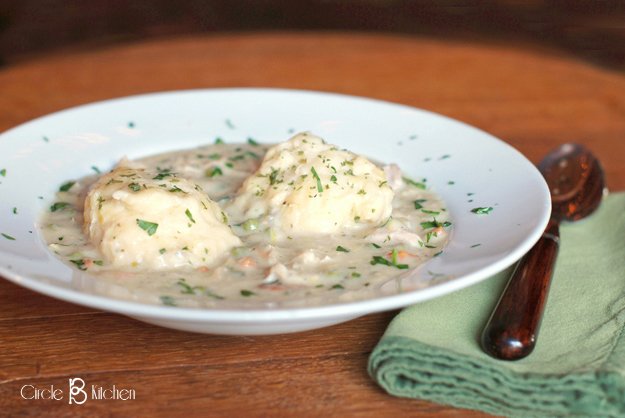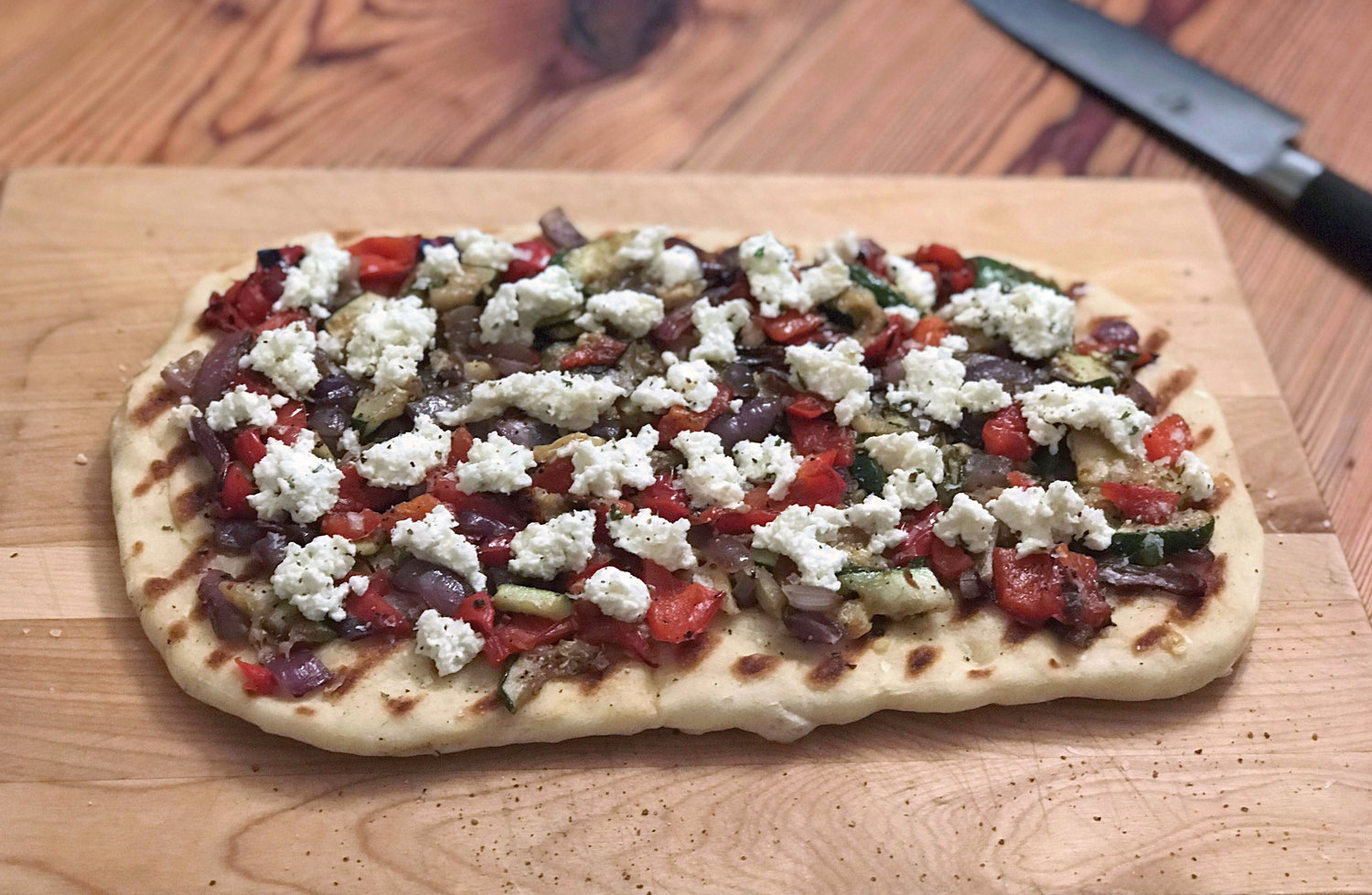Teriyaki Salmon Noodle Bowls
/The last few weeks have been a teriyaki fun fest here in the Circle B Kitchen. Once I get an idea in my head (like perfecting the ultimate teriyaki sauce), it's a pretty good bet we'll be dining on teriyaki noodles until I get it right. And I've gotta tell you there are worse things than eating teriyaki salmon noodles every week (The Husband has seemed fairly jubilant every time he gets a whiff of this in the kitchen). Even when it's not exactly just right, it's still awfully good, but when you do finally get it very right, once a week might not seem often enough.
So, I just have to tell you that getting from point A (imagining the perfect bowl of teriyaki salmon noodles) to Point Z (actually dining on the perfect bowl of teriyaki salmon noodle bowls) became way more complicated than I ever imagined when I set out on this quest. Firstly, I was focused on the sauce. Maybe it's just me, but it seems like most bottled teriyaki sauces are either too sweet or one-note or just basically kind've uninteresting. A little research turned up a goodly amount of information on this subject, which boiled down to the fact that in Japan, at its most basic, a good teriyaki sauce creates a perfect balance between sweet and salty.
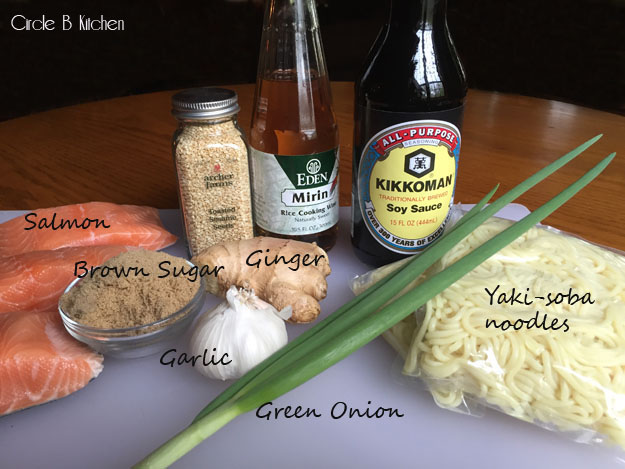
Simple enough to say, a little harder to achieve, but we accomplished this with a delicious combination of soy sauce, mirin, brown sugar, garlic, and ginger.
Once I got the sauce just right, I moved on to the noodle component of our bowls, which began at the Asian Market and where I found that I had more than a few noodle options to choose from (and this didn't include the fresh and frozen noodles).
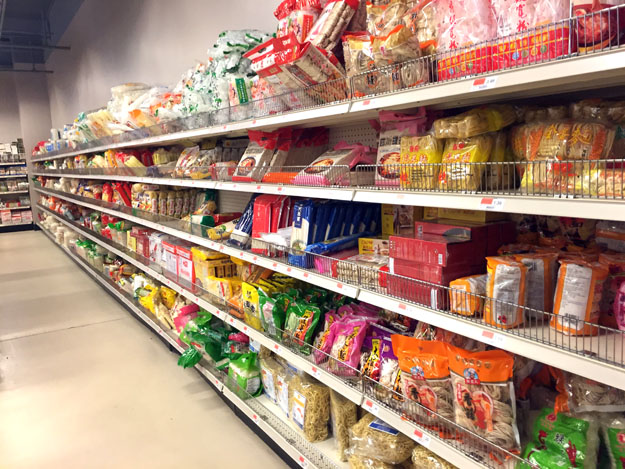
My spinning head is not visible in the photo. But I soldiered on, and after a very enlightening conversation with a noodle expert there, I chose 3 or 4 options with which to experiment (a rice noodle, a Chinese Egg noodle, a ramen noodle and yaki-soba). I already had some lo mein noodles at home to use as well.
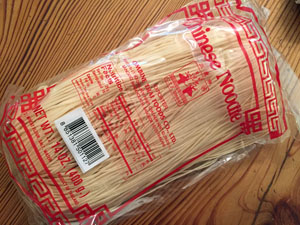



A few more trials ensued, after which I came to the conclusion that there are few bad noodle options. But there are definitely some that are better than others. Our favorite turned out to be a fresh yakisoba noodle that they actually sold from the freezer. There are shelf-stable yaki-soba noodles sold with the dried noodles, but avoid these at all costs. They do not hold up well and have little or no texture or flavor. (With the ramen and Yaki-soba, just discard the flavoring packets that come with the noodles.)
We loved the ramen noodles, but a word of caution here... always check the back of the package. Ramen noodles are deep fried before drying so they tend to be rather expensive calorically. My favorite Japanese ramen had a whopping 20 grams of fat per serving. Yowsers!! I'm guessing that the flavor packet carried a few of those fat calories, but still.

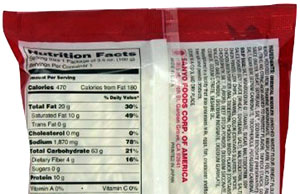
I did a little more research and found these organic ramen noodles with 1 gram of fat (they're baked, not fried) and they were very good!


Many Asian noodles take only a couple of minutes to cook or heat through, so follow the package directions carefully. Our yaki-soba noodles just took a quick dunk in barely boiling water to loosen before adding to the pan with the sauce. Overcooked or soggy noodles are not welcome here. Of course, in a pinch, spaghetti noodles can work as well.
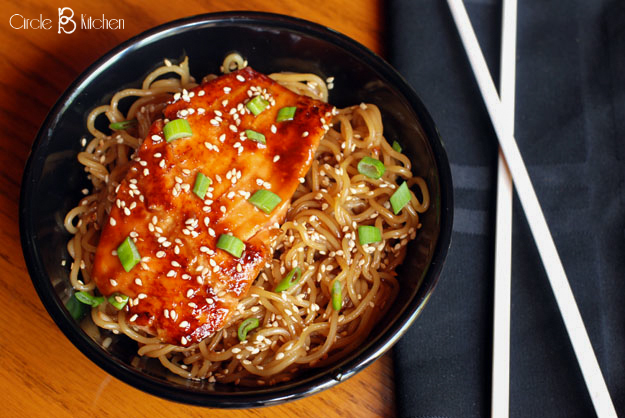
Once we got the sauce and the noodles figured out, there was the question of the salmon... cut into chunks before marinating? Leave the filets whole? Do they need to marinate at all? I ended up liking to leave the filets whole before cooking and decided that I also liked not marinating them best of all. It was nice to taste the salmon along with the sauce.
In one of my trials I stir fried a little broccoli in with the noodles and that was awesome. I highly suggest this, although just about any veggie or combination of veggies would also be great.
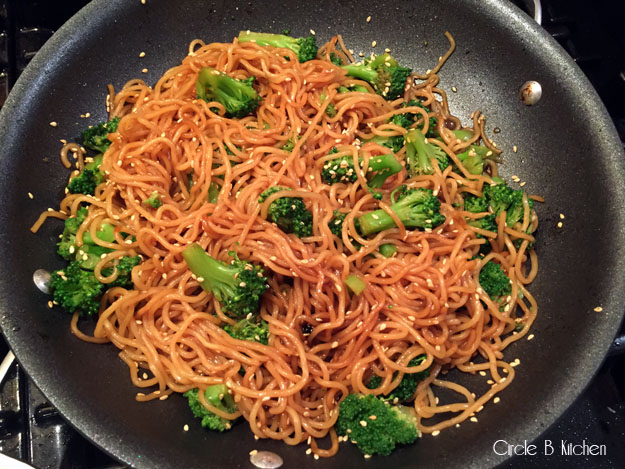
So, basically what emerged from my trials is a lovely teriyaki sauce tossed with sesame seeds and springy, tasty noodles (and veggies, if you like), then topped with a perfectly cooked salmon filet, drizzled with more teriyaki, and a sprinkling of toasted sesame seeds and chopped green onion. And maybe the best part is that the whole thing comes together in less than 30 minutes.
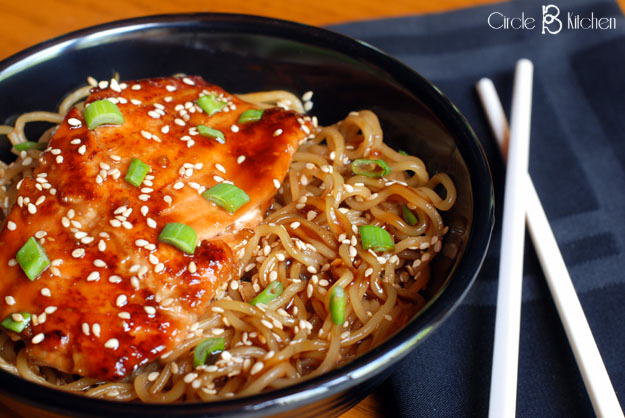
Of course, our teriyaki sauce would be equally lovely on shrimp or chicken (you could also make this into a teriyaki rice bowl) or grilled meats, fish or veggies and it keeps really well in the fridge for like decades. I wouldn't want to test that last thing out, but make extra so you have it on hand to drizzle over rice or leftover veggies or stir into soups or over meatloaf. You get the idea. Here's the recipe...
Teriyaki Salmon Noodle Bowls
Click here for a printable recipe
One of the fun things about these noodle bowls is playing with different kinds of noodles. You can use ramen noodles, rice noodles, Chinese egg noodles or spaghetti noodles. One of our favorites is yaki-soba noodles. You can usually find them in the refrigerated section of the grocery store (just discard the seasoning packet). There are shelf stable versions of yaki-soba, but I would avoid those as they don’t hold up well in the pan. And feel free to swap out the salmon for chicken thighs and add veggies of our choice... red pepper, zucchini and snap peas would be great in this. Enjoy!
Serves 3-4
INGREDIENTS:
10 oz Asian noodles of your choice (see headnote)
3 or 4 6- oz salmon filets, skin and pin bones removed
1 tablespoon olive oil
1 teaspoon sesame seeds
1 or 2 green onions, thinly sliced
For the Sauce:
1 tablespoon cornstarch + ¼ cup water
½ cup reduced sodium soy sauce
1/4 cup brown sugar, packed
2 cloves garlic, minced
1 1/2 teaspoons freshly grated ginger
½ teaspoon pepper
¼ cup mirin
¼ cup water
DIRECTIONS:
In a small bowl, mix together the cornstarch and water and set aside.
In a small saucepan over medium heat, add soy sauce, brown sugar, pepper, garlic, ginger, mirin and ¼ cup water; bring to a simmer. Stir in the cornstarch mixture until thickened, about 2 minutes. Set aside.
Heat olive oil in an oven- proof skillet over medium high heat. Brush the top of the salmon filets with the teriyaki sauce and then place top side down in the skillet. Brush the other side of the salmon with more of the teriyaki sauce, cook about 4-5 minutes and then turn the salmon over and cook another 3-4 minutes, depending on the thickness of your filets.
While the salmon cooks, cook your noodles according to the package directions. (Some Asian noodles only require soaking to soften.)
Remove the salmon from the pan and keep warm.
To the pan add the cooked noodles and about ½ cup of the teriyaki sauce. Using tongs, mix the noodles with the sauce and 1/2 teaspoon of the sesame seeds until the noodles are completely coated with the sauce, adding more sauce as needed.
To serve, place noodles in a shallow bowl and top with a salmon filet. Drizzle with some of the teriyaki sauce, another sprinkling of sesame seeds and some chopped green onions.












